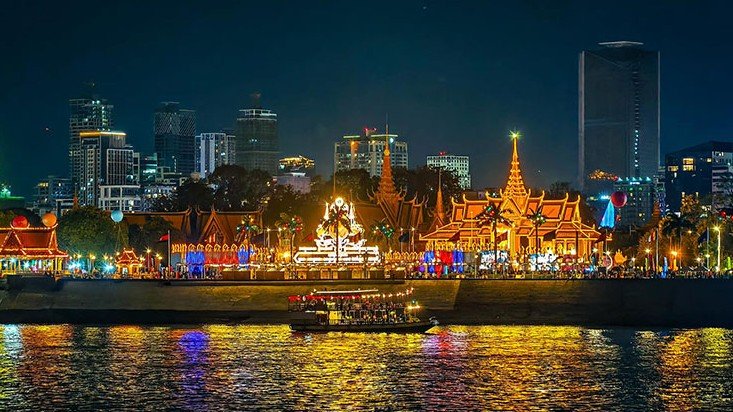With continued investment in infrastructure, technology, and sustainability, Cambodia is strengthening its position as a must-visit destination
Cambodia’s tourism sector is witnessing a remarkable resurgence, playing a crucial role in driving the country’s economic growth. With 6.7 million international visitors in 2024, a 22.9% increase from the previous year, the industry generated $3.63 billion in revenue. As the government sets a new target of attracting over 7 million international tourists by 2025, tourism remains a pillar of national development, creating employment, boosting local businesses, and strengthening Cambodia’s global reputation.
Tourism as an Engine for Economic Development
Tourism has been at the heart of Cambodia’s economic transformation, often described as “green gold” for its sustainable contribution to national progress. The influx of international visitors has led to job creation across various sectors, particularly in hospitality, transport, and retail. With millions of Cambodians depending on tourism for their livelihoods, the sector plays a significant role in poverty alleviation and social stability.
Local businesses, from handicraft makers to traditional food vendors, have benefited from increased tourist spending. The demand for authentic Cambodian products has expanded export opportunities, helping small and medium enterprises (SMEs) thrive. Moreover, infrastructure investments, including new airports, digital ticketing systems, and expanded transportation networks, have enhanced Cambodia’s appeal as a convenient and accessible travel destination.
Government Strategies to Sustain Growth
The Cambodian government has implemented multiple initiatives under the Pentagonal Strategy – Phase 1, aimed at diversifying tourism offerings, ensuring security, and integrating technology into the travel experience.
Beyond Angkor Wat, the country is promoting eco-tourism, coastal tourism, and adventure tourism to attract a broader range of travelers. New cultural festivals, historical exhibitions, and sustainable tourism projects are being introduced to offer unique experiences. Investments in security and political stability have also reassured international travelers, making Cambodia a preferred destination in Southeast Asia.
Technology is playing a significant role in the sector’s transformation. The introduction of self-service ticketing systems at major attractions and the development of a dedicated tourism mobile app have improved convenience for visitors. These digital initiatives are making travel in Cambodia smoother and more appealing to tech-savvy tourists.
Challenges Facing Cambodia’s Tourism Industry
Despite its impressive growth, the tourism sector faces challenges that need to be addressed for sustainable expansion.
One major concern is global economic uncertainty. Geopolitical tensions, such as the Russia-Ukraine conflict, have influenced international travel trends, affecting visitor numbers from key markets. Additionally, the lack of direct flight connections from major international cities remains a hurdle, making Cambodia less accessible compared to neighboring countries like Thailand and Vietnam.
Human resource development is another critical issue. The hospitality industry faces a shortage of skilled professionals, impacting service quality. To address this, the government is investing in training programs to enhance customer service and cultural awareness.
Sustainable tourism management is also a growing concern. While increasing visitor numbers drive economic benefits, protecting Cambodia’s cultural and natural heritage is equally important. Heritage sites like Angkor Wat require careful preservation, and the promotion of eco-friendly tourism is essential to balance growth with environmental responsibility.
The Path to 7 Million Tourists by 2025
Despite these challenges, tourism experts are optimistic that Cambodia can surpass its 2025 target of attracting over 7 million visitors. Enhanced international marketing campaigns, stronger collaboration with private investors, and improved regional connectivity through ASEAN partnerships are expected to drive growth.
Expanding Cambodia’s tourism offerings beyond its traditional landmarks will also be crucial. The rise of community-based tourism, sustainable eco-tourism, and cultural experiences will help attract travelers seeking immersive and meaningful journeys. Moreover, the quality of services, including hospitality and transportation, must continue to improve to compete in an increasingly competitive regional market.
Conclusion
Cambodia’s tourism sector is at a turning point, poised to become one of the country’s most influential economic drivers. With continued investment in infrastructure, technology, and sustainability, Cambodia is strengthening its position as a must-visit destination. The balance between economic expansion and environmental responsibility will be key to ensuring that tourism remains a sustainable force for national prosperity. As the government and private sector work together, Cambodia’s global reputation as a thriving travel hub will continue to rise, benefiting both visitors and local communities for generations to come.


